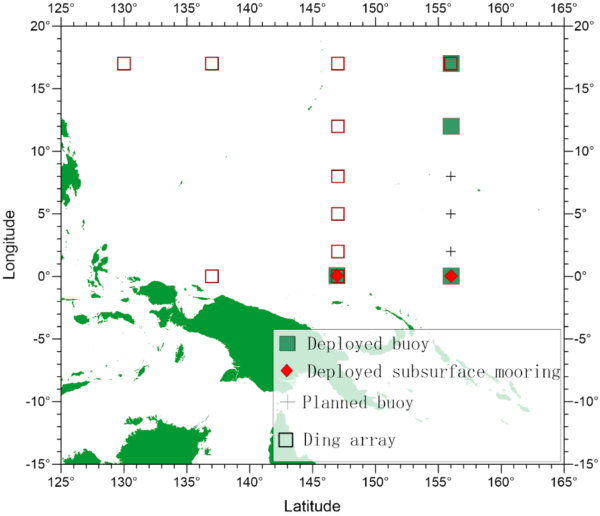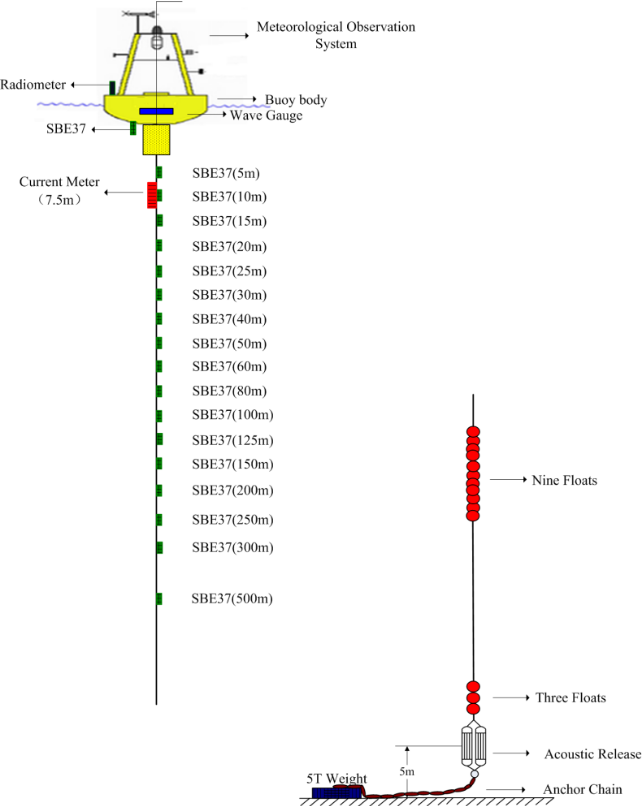China Experimental Observing Project in the Western Tropical Pacific
PIs: Feng Zhou (SIO/MNR), Dake Chen (SIO/MNR), Fei Chai (University of Maine), Xiaohui Xie (SIO/MNR), Weidong Yu (Sun Yat-Sen University)
Description
The China Experimental Observing Project consists of deploying three moored buoys in the western equatorial Pacific as a pilot effort. Buoys are set up with similar configurations to Tier 1 at (0, 147°E), (0, 156°E), (12°N, 156°E), respectively. Additionally, there is an experimental buoy at 17°N, 156°E to test with a new structure different from those three. Note that there are also 28 Argo floats deployed in the western Tropical Pacific.
There will be two steps of assessment conducted, one nearshore intercomparison along the Chinese coast and one land intercomparison for meteorological sensors and system integration with TPOS partners. These buoys will be set up similar to Tier-1 buoy configurations with 17-layer underwater temperature and salinity sensors in addition to meteorological sensors at the surface. This is anticipated to be a substantial part of China’s contribution to fulfill the buoy gap in the western Pacific.
Accomplishments
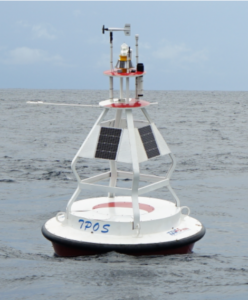
Three buoys (0, 147°E), (0, 156°E), and (12°N, 156°E) in Ding array. A subsurface mooring with ADCP was deployed at (0, 156°E), and (12°N, 156°E), respectively.
- The nearshore intercomparison was conducted in Oct. 28 to Nov. 25 2020.
- The implementation cruise of Ding Array was conducted between Dec 2020 to Feb 2021. In total, four buoys (Fig. 1) with configurations similar to Tier1 ( Fig. 3) two subsurface moorings along with 28 Argo floats (Fig.2) were deployed in the western tropical Pacific.
Lessons Learned
1. The timing of the implementation cruise was actually not very good for deploying these buoys due to the bad weather in winter. The better periods to deploy or maintain these buoys is later spring or summer avoiding tropical storms. However, the R/V resource, international cooperation policy in addition to Chinese funding policy are also very important limitations. The regional cooperation must be emphasized among all stake-holders at any time.
2. The two-year experimental project was just a start, a much-longer project is definitely needed to construct and maintain the array. The Chinese side will keep moving on with the present buoys and try to find out any lessons that might help to improve the system. More efforts also are needed to make to change the financial policy that could grant us continuous support in the next five-year-plan.
Publications
None at this time.
Data
None at this time.
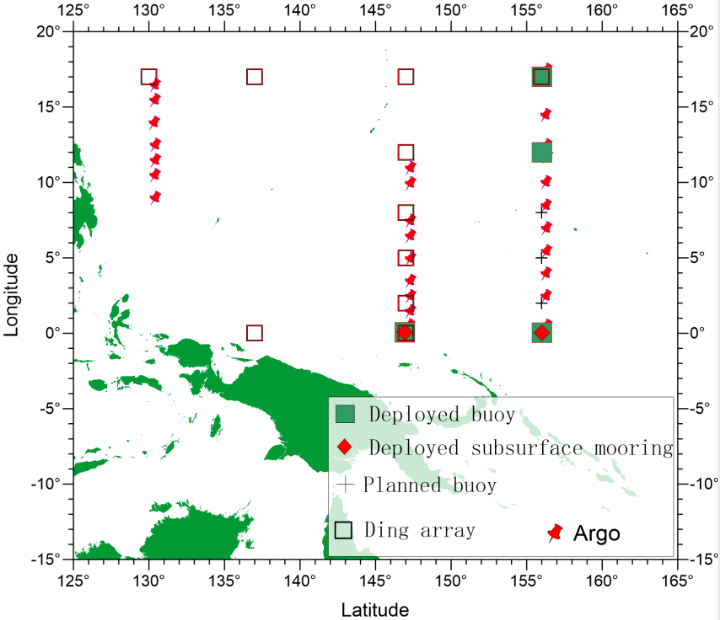
The modified Ding array and the first phase implementation supported by China imposed with buoys, subsurface mooring and Argo.
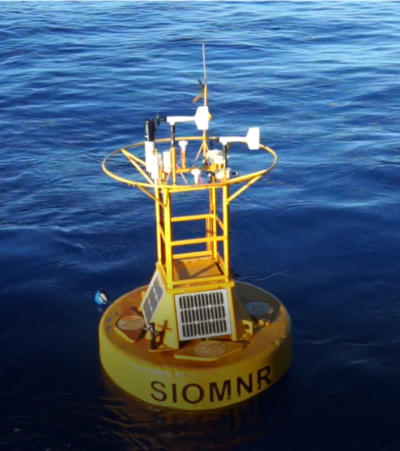
The fourth buoy are experimental with a different structure (17N, 156E) in Ding array.

